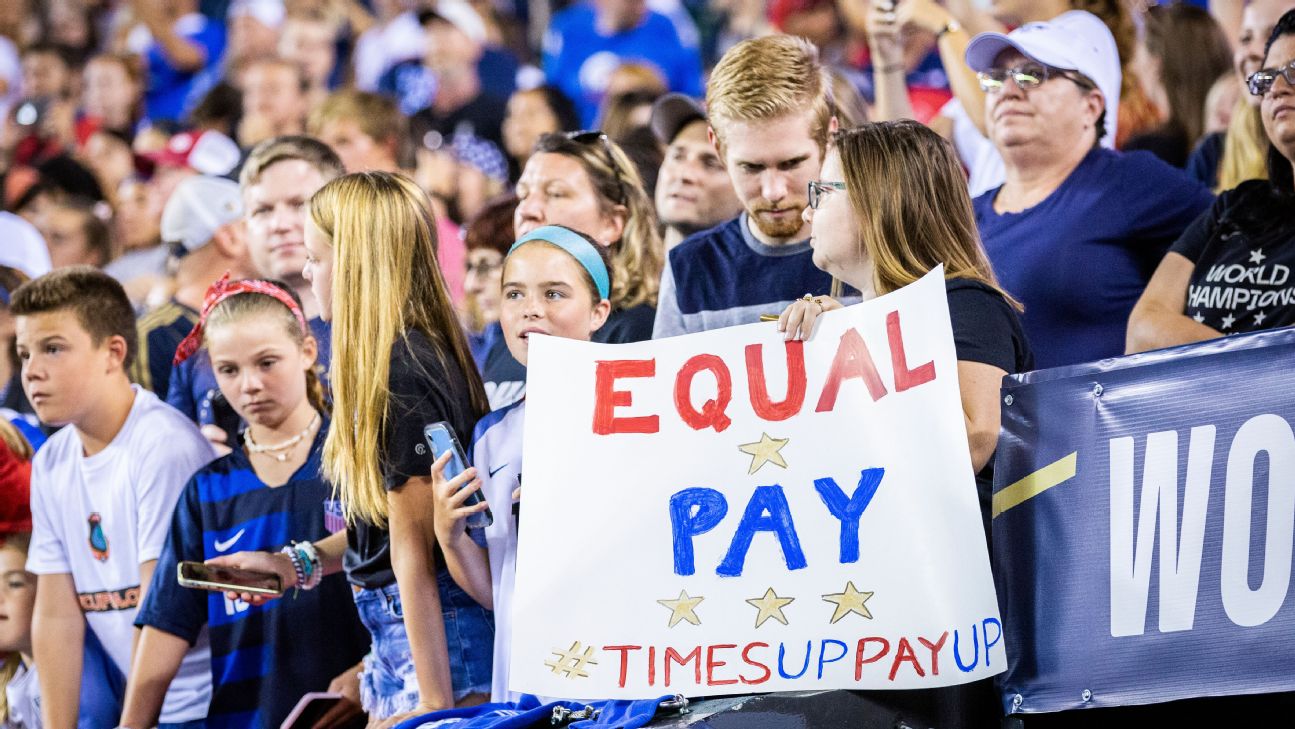
The Women’s World Cup is getting $150 million in prize money, a 300% increase over 2019, but still nearly three times less than the $440m the men got in Qatar 2022.
Although the $150m fund for the first 32-team tournament is a huge boost from the $30m for the 24-team edition in 2019, and 10 times what it was in 2015, it is still considerably lower than the $440m total prize money awarded at the 32-team men’s World Cup in Qatar last year.
FIFA said it is aiming for parity between the men’s and women’s tournaments by 2027.
Some of that prize money must be dedicated to paying players, FIFA president Gianni Infantino said Thursday after being reelected unopposed through 2027.
According to ESPN sources, the precise breakdown is $110m in prize money and then $31m towards preparation funds and $11m to club benefits.
Infantino also again blamed the disparity on broadcasters for offering too little for TV rights. He said FIFA will not sell broadcast rights for the tournament in Australia and New Zealand at the prices currently being offered.
“Women deserve much, much more than that and we are there to fight for them and with them,” he said.
Female players worldwide have been fighting for equal pay and equal respect with men’s national teams, including the defending champion United States, Canada, France and Spain.
Infantino set a target of equal prize money for men and women at their next World Cups, in 2026 and 2027, respectively — a tough task when the 32 men’s teams shared $440 million at last year’s World Cup in Qatar.
The FIFA president targeted broadcasters, some of them public service channels funded by taxpayers, who he said offered up to 100 times less for rights to the women’s tournament.
Infantino first raised the issue in October in New Zealand, and insisted FIFA still would not sell at those prices with women’s football drawing audiences perhaps 20-50% less than for men’s games.
“Well, offer us 20% less, 50% less. But not 100% less,” Infantino said in closing remarks to the FIFA Congress. “That’s why we can’t do it.
“For the first time ever, I [plan to] dedicate a specific portion of this payment, which mainly has to go to football development, but a specific portion of that should go of course to the players,” Infantino said, in announcing Step Two of his three-step plan.
Step One, Infantino said, will be equal conditions and services for all men and women playing at a World Cup.
“This will be a reality already for the Cup in 2023, same conditions as for the World Cup ’22 will be for the players and coaching staff in the Women’s World Cup in ’23.”
Step Three, he said, would be the most complicated and would include a dedicated marketing strategy for the women’s game.
FIFPRO, who wrote to FIFA last October, calling for parity in conditions, facilities and prize money between the men’s and women’s World Cups, called Friday’s news “significant progress” but said that they would continue to push for equity.
“Through the voice and solidarity of players around the world over months and years of campaigning, significant progress has been made in the conditions, prize money, and prize money redistribution for the 2023 FIFA Women’s World Cup,” FIFPRO said in a statement to ESPN.
“Players are united behind simple yet concrete demands for greater professionalisation of the FIFA Women’s World Cup: equal regulations and conditions, fair redistribution of prize money to players, and a pathway to equal prize money, as well as an agreement that protects these commitments — both now and as a legacy for the players in the future.
“FIFPRO, its member unions, and the players celebrate the progress made by FIFA regarding conditions and prize money for the upcoming Women’s World Cup.
“The progress announced today demonstrates the intent of the players and FIFA to work proactively towards greater equity and equality for the industry.
“The work is not yet done. FIFPRO and 150 players from 25 national teams were clear in a letter sent to FIFA in October; the pathway to full equality remains of paramount importance.”
Information from Reuters and The Associated Press was used in this report.













